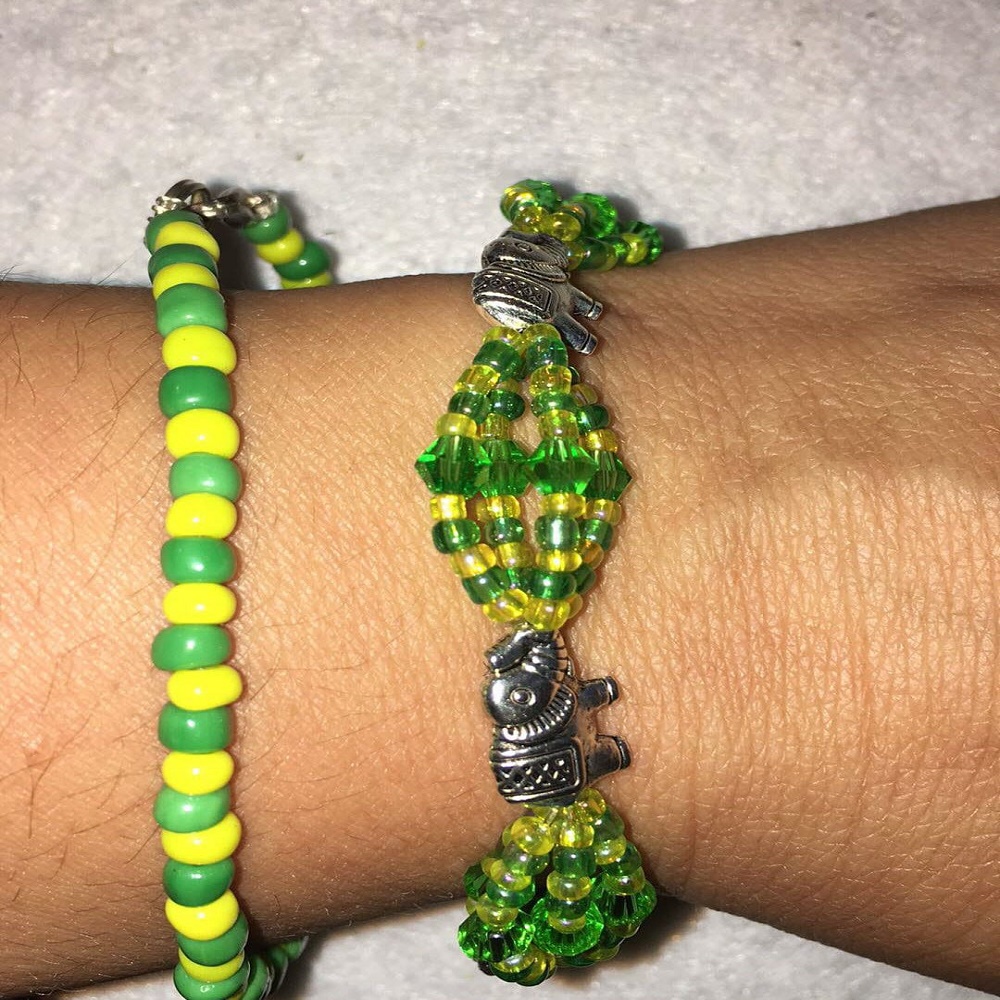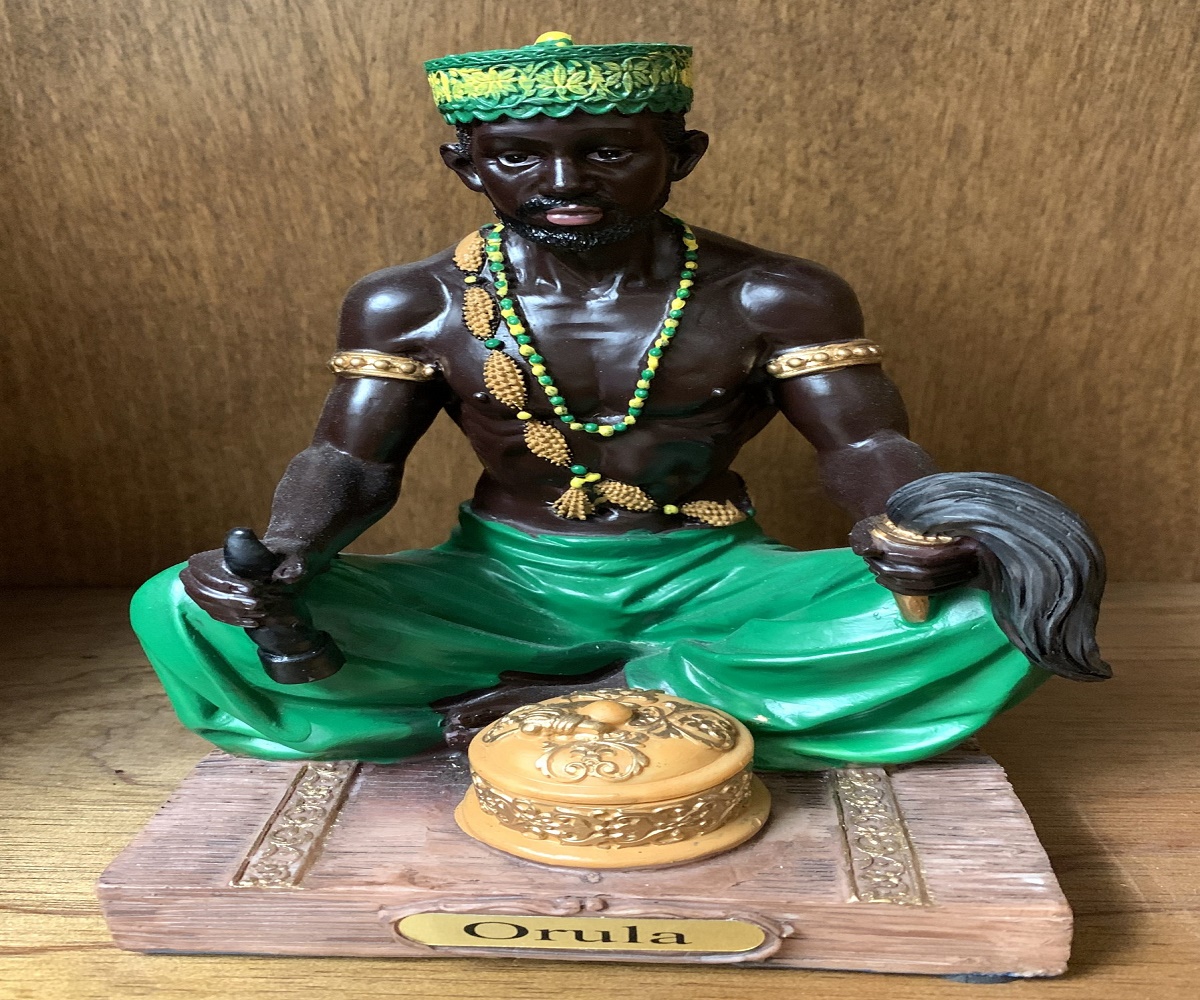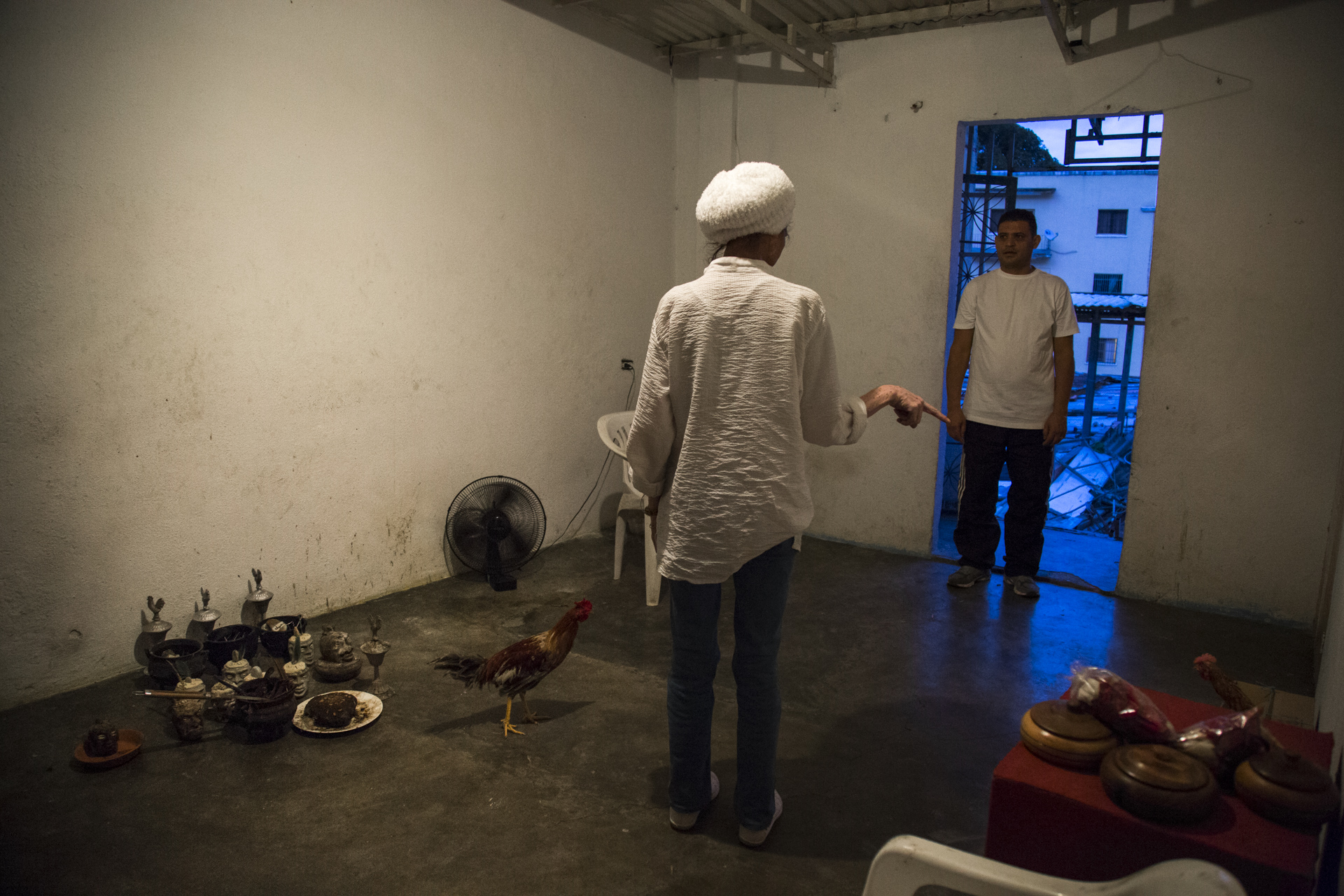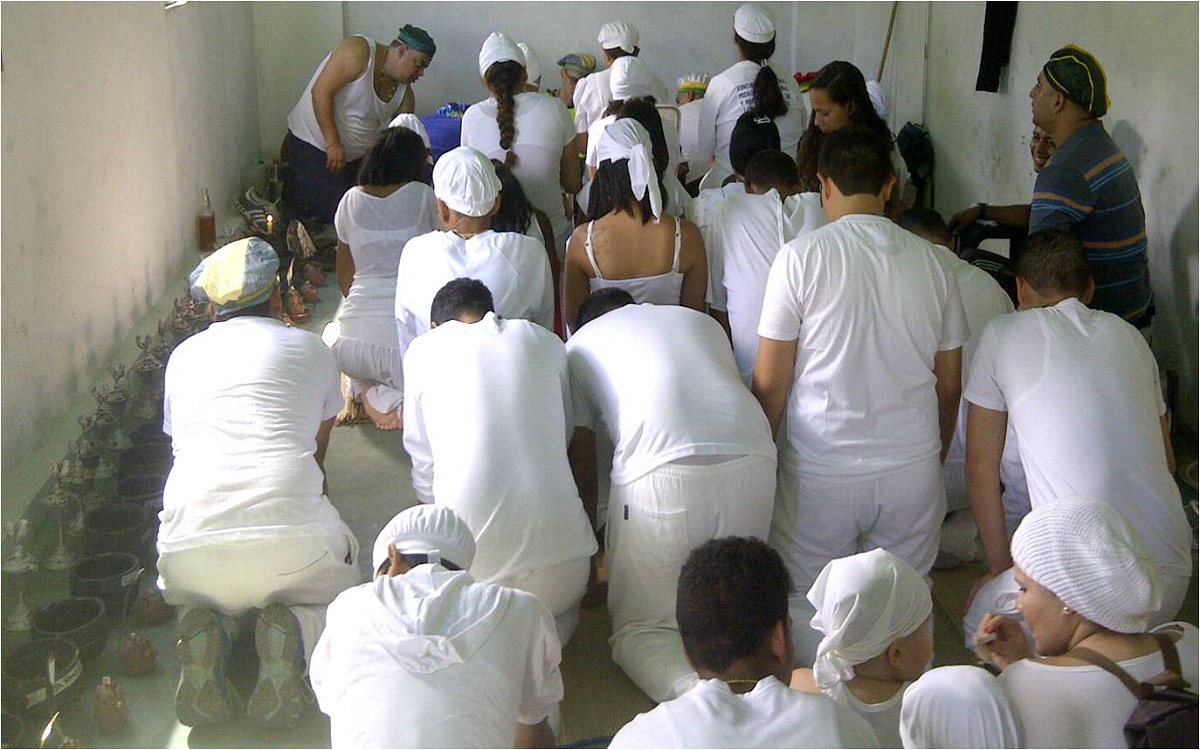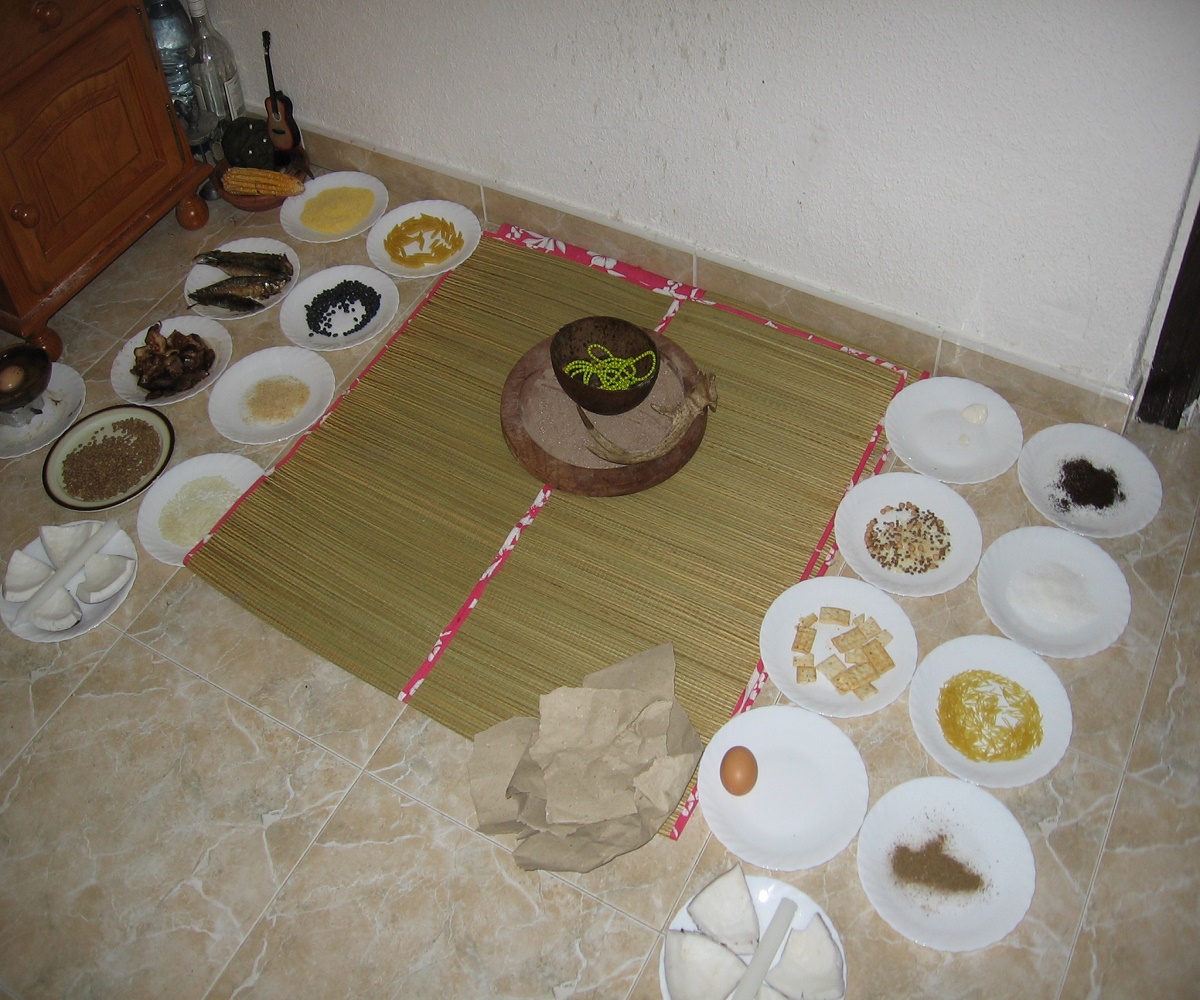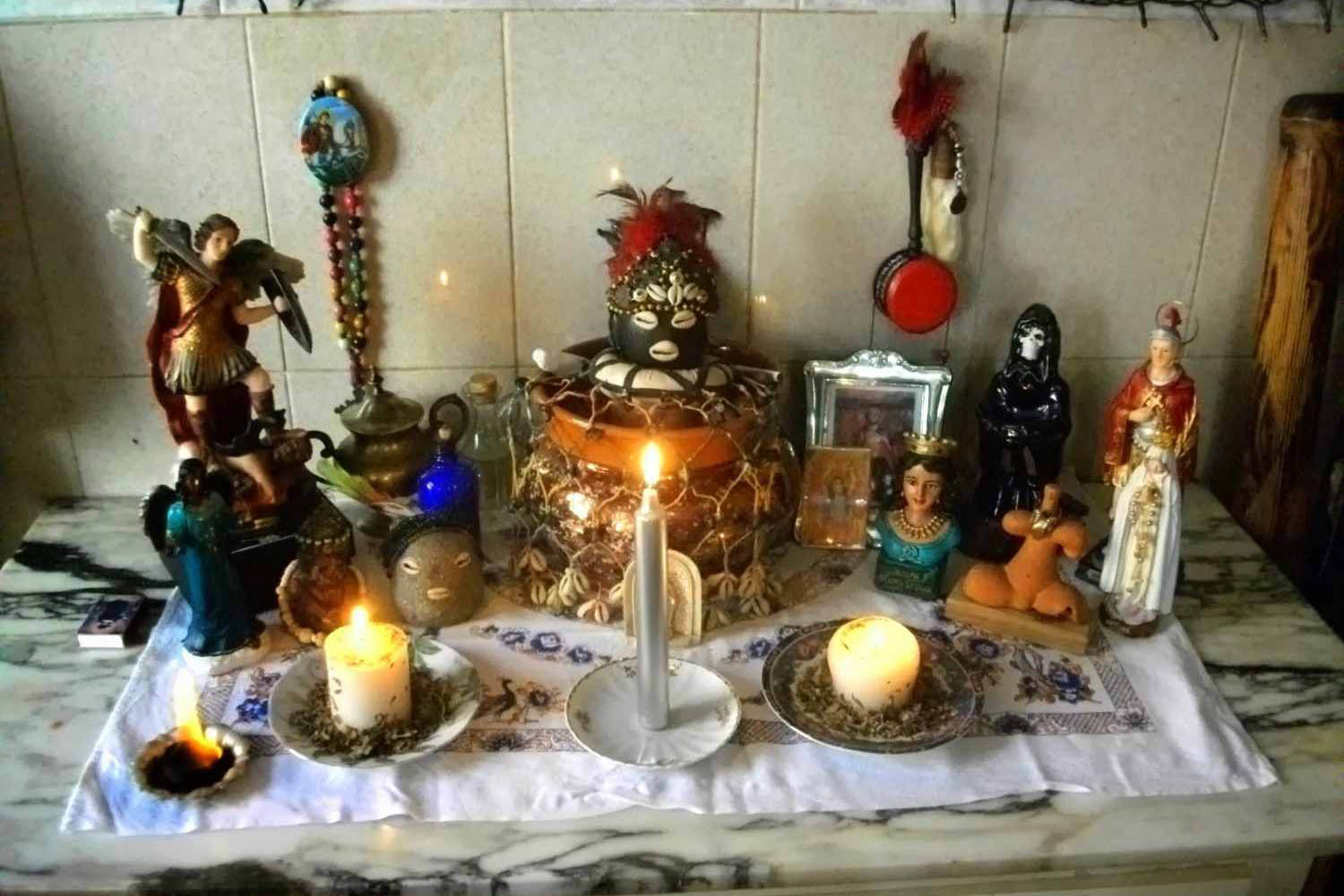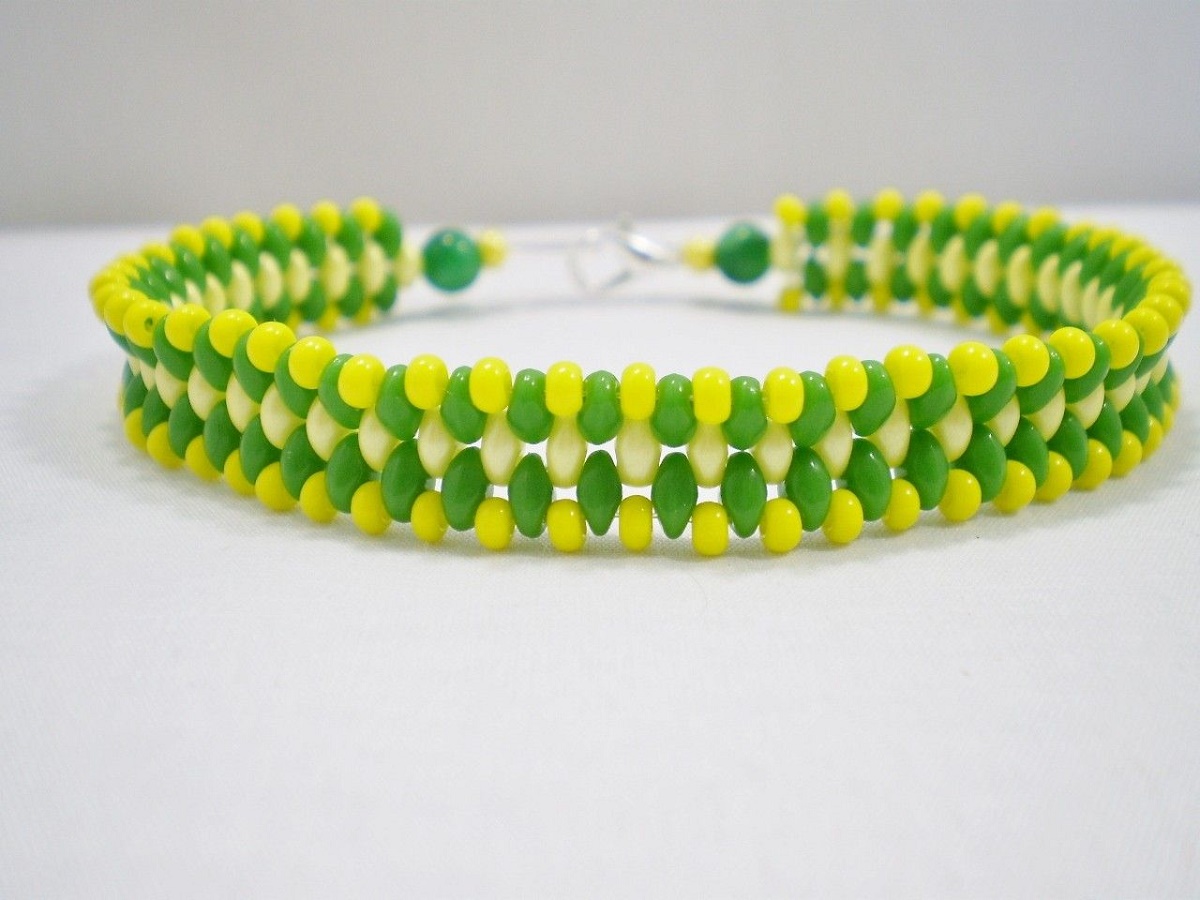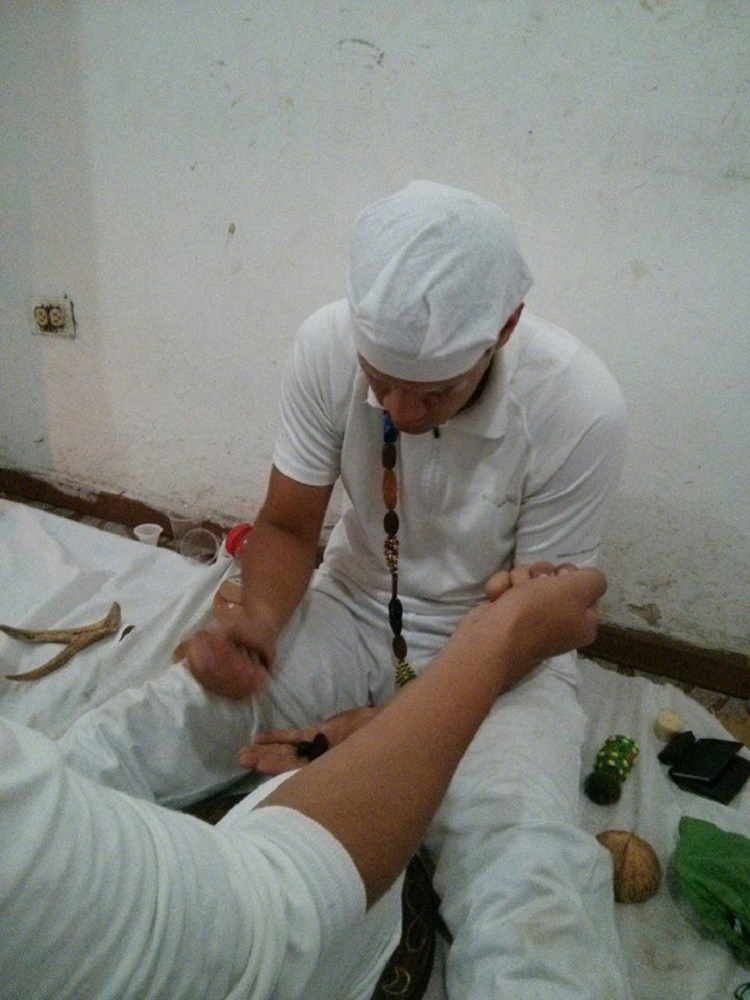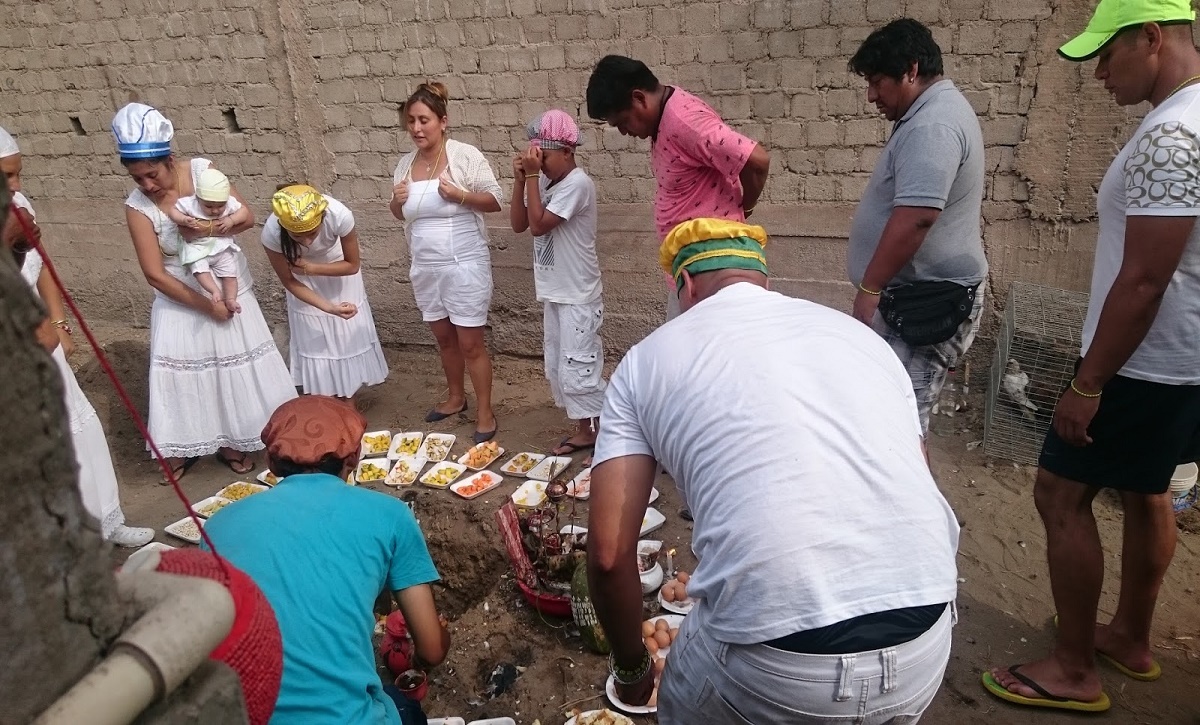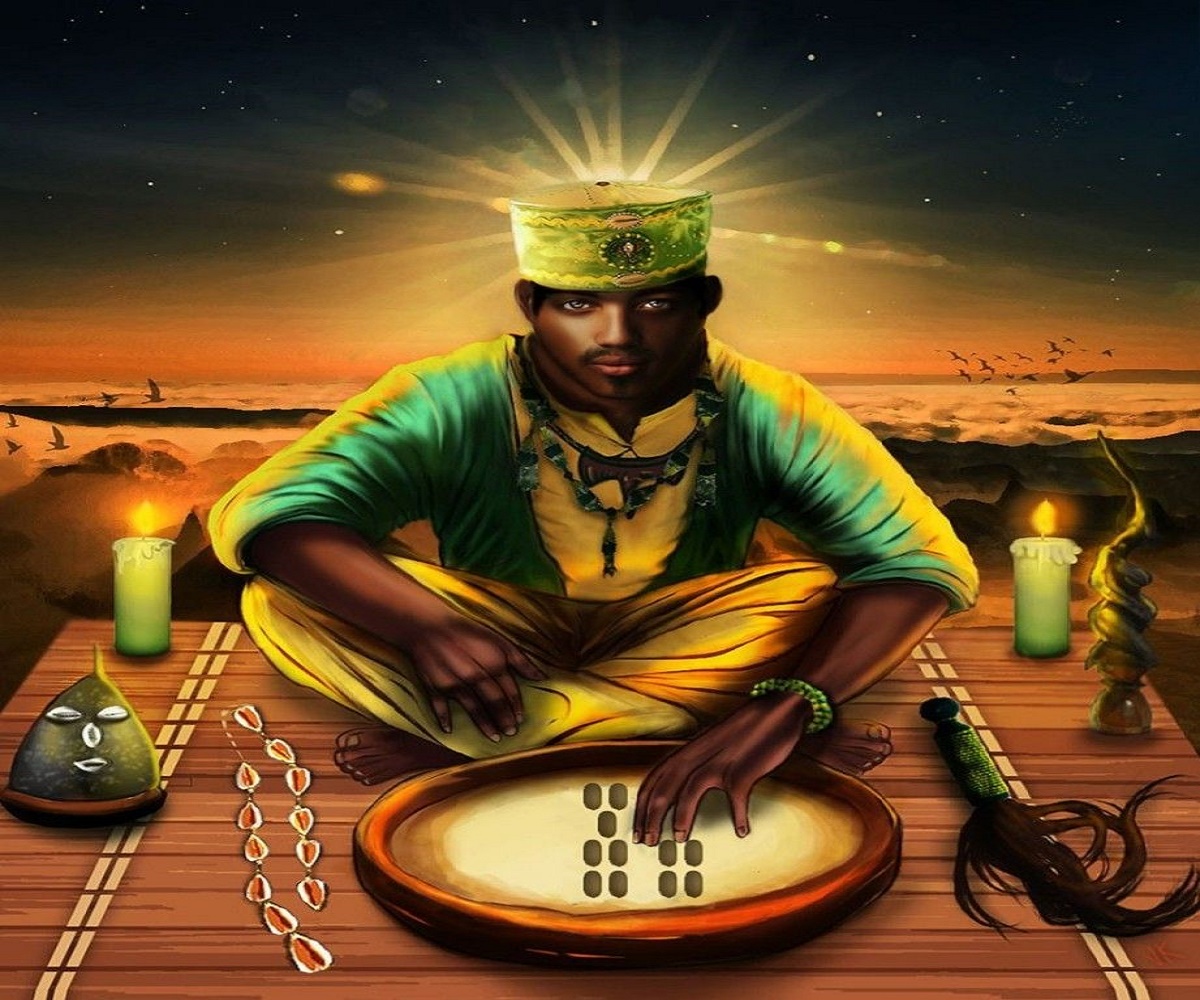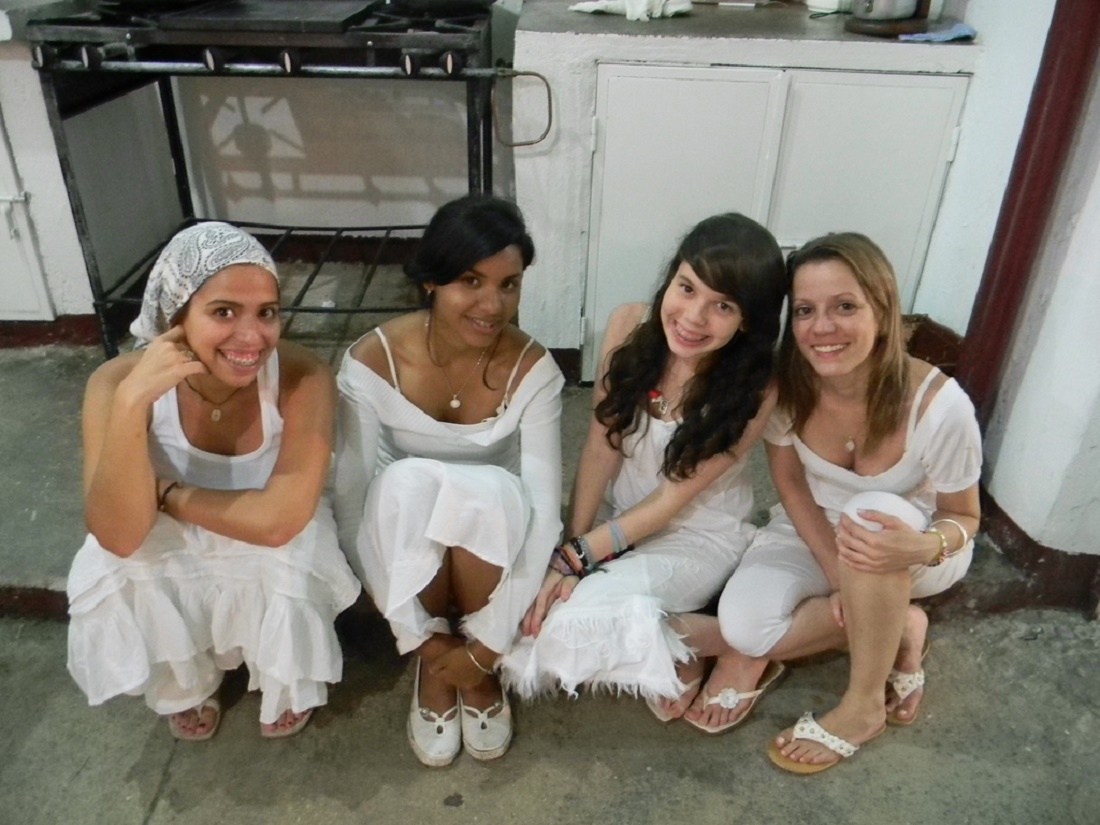In this article we will give information about what the Orula's Hand and its benefits, because it is one of the first ceremonies that the initiate in the Yoruba religion must fulfill, since upon receiving Orula's hand, his sign and letter of the ifá will be made known to him, as well as his destiny will be interpreted to him. through the divinatory system used by the Babaláwos. He continues reading and learns more about Orula's hand.

Orula's Hand
In the Yoruba religion, the hand of Orula is known as a ceremony or rite, which will have as its final objective to receive Orula, in order to give the initiate knowledge about his destiny so that he is aware of his true mission in life. .
It is done through the consecration of Ifá, which is a very organized religious system, which begins with the teachings of Òrúnmilà, I feel this is a spirit that is located in the Yoruba religion called Elérì Ìpin Ibìkejì Olódùmarè.
When the initiate is allowed to receive the hand of Orula, who is one of the most important deities of this religion, he is being allowed to consecrate himself to Ifá, which is the Yoruba body of philosophical knowledge and rituals to provide him with the divinatory system.
It is called the hand of Orula, the set of 16 sacred seeds that are known as ikines. Which are used as tools to be able to consult the Oracle of Ifa, to whom it belongs is Orunmila, since he is its owner. When the person receives Orula's hand, he not only receives a set of seeds but also receives the Orishas warriors and the Orisha Orunla who is also accompanied by Oggun, Elegguá, Ozun and Oshosi.
In the ceremony or ritual that is performed to receive the hand of Orula, the individual can also receive the necklaces of Orunla and the Orisha Warriors, in the same way they receive the manila that is known as iddé or iddefá of Orula.
This will represent the commitment that Orunla made with Iku (Death) which means that the person cannot die until he fulfills his destiny on Earth. In this way the manila or inde will protect the person from premature death or an accident.
What is Orula's hand?
According to the Yoruba religion, Orula is a branch of Òrúnmìlà, which means the name of the prophet who knows the Ifá oracle. While the hand refers to a set of 16 palm tree seeds known as (Ope Ifá). Those who are initiated into the Yoruba religion must have a set of these seeds that bear the name of Ikin, while the Babaláwos have at least two pairs.
Upon receiving Orula's hand, which is also known as Òrúnmìlà's hand (Owofakan), the person will receive 16 seeds (Ikines) from the palm tree, by which the Ifá priests can reveal the person's destiny. Owo (hand), Ifá (Oracle) and Okan (One). Upon receiving Orula's hand in the initiation ceremony, the person will be revealed what his destiny is, the mission that he must fulfill and the possibilities that he has and his weaknesses.
In the Ifá tradition, it is said that all beings who come to the earthly world must kneel before Ọlódùmarè (God) and must choose a destiny to fulfill while on Earth. The only witness to that pact is Òrúnmìlà, the deity of wisdom and holder of the Ifá oracle.
When he is already near the chamber of Ọlódúmarè and on the trip that people must make to Earth, many come so that the celestial Ifá priests can guess what their mission or purpose on Earth is? and these recommend them to make a sacrifice so that these projects can be carried out in the best way.
But when people go from heaven to Earth, which is the maternal womb, they forget what that purpose of life is that was entrusted to us and through the ceremony or ritual of Orula's hand we can remember it thanks to Òrúnmìlà.
In the figure of Odù that is found in the divination tray (Opón Ifá), there are all the advice and messages that the initiate must know in order to fulfill the purpose or mission so that his life on Earth is convenient. The sacrifices known as (Ebo), it is recommended that they should be made before going to Heaven from Earth, which are the ones that people should quickly fulfill.
In this way, Òrúnmìlà in the Orula hand ceremony will tell you who is your tutelary orisha or your guardian angel, through the Babaláwos or priests, from whom people inherited some of his characteristics and that they must follow the customs of the patron Odú.
That is why if the person fulfills the life agreement that comes out in Orula's hand and makes all the sacrifices, he will find happiness, since if he came to be a farmer he must make the best harvest and do not try to be something else because it will not go well in your life.
When Orula's hand is received, by faith and by believing in it, the person must respect and pay attention to Òrúnmìlà and he will help him to have what he wants in life until he reaches happiness, but do not think that he will come in the form of a credit card.
People are suggested not to try to receive the hand of Orula, or Òrúnmìlà, in order to gain fame, money and travel. Since he is not a Bank nor does he work in the emigration department. But he knows what you want and it is in his heart. That is why he will grant you what is within the reach of Òrúnmìlà and for the sacrifices you have made following a correct life.
When the individual receives the hand of Orula together with the Orisha, he will be able to have someone to lean on when he has a problem or believes that the world is falling apart or when life does not offer moments of happiness.
Who is Orula?
Orula or also known as Orunmila, is known as the Orisha of divination and the Supreme Oracle, he is the first prophet of the Yoruba religion and was sent by Olodumare to control births, in the same way Orula is known as a great benefactor of humanity and the main adviser of Olodumare.
As Orula has the power of divination, she can reveal the future through the secret of Ifá. She also has the power to heal and the person who ignores her advice can suffer the transformations that Eshun produces.
The prophet Orula represents intelligence, wisdom, cunning and mischief and adapts to evil, When the God Olodumare decides to create the universe Orula was his witness in this way he knows the fate of everything that exists in the world. For this reason he is also known as the eleri-ipin ibikeji Olodumare (Witness of all creation and second in command of Olodumare).
Orula is the prophet, the deaths and development of human beings and other species are also attributed to him, he is the owner of the Oracles in the Yoruba religion and the diviner par excellence as the interpreter of Ifá. Orula as a prophet was on Earth with the 16 celestial ancestors who are also known as the Meyi of Ifá. Some students of the religion place it between the year 2000 and 4000 BC. The cult that is paid to Orula comes from Ilé Ifé and his name comes from the Yoruba Orunmila which means "Heaven only knows who will be saved".
In this way, Orula will personify wisdom, and can also influence people's destiny, even if it is the most adverse destiny that may exist, but people who do not follow Orula's advice, whether it is a man or any Orisha, this You can be a victim of the Osogbos (you mean a negative environment such as illness, fight, tragedy, upheaval or sudden death) that is sent by Eshu.
It is important to highlight in this article about the hand of Orula, that Orula forms a trinity with Olofin and Oduduwa (Oduduwá). Only those chosen by Orula have the possibility of entering her cult through the hand of Orula (Awo Fa Ka) for men and Iko Fá Fun, for women.
Women are considered as women of Orula and are given the name "Apetebí" this is a more important consecration that is given to women in the cult of Orula. While in the case of men they can become Babaláwos only if Orula wishes so, they become priests of the Yoruba religion.
In the Yoruba religion Orula has been given the knowledge about the secrets of the human being and of nature, in the same way he has obtained the knowledge of the history of humanity since he has accumulated it for his time on Earth.
On the level of humanity, Orula will represent the spirituality of all deceased Awó ni Orula. In this way he will be the guiding interpreter of the Oddun of the Ifá Oracle. Well, he doesn't sit on his head since he can only communicate through his Oracle. Orula has the privilege of knowing the beginning and end of all things. This also includes the Orisha and the Oshas. He allows men who can know his future and can influence the future of each person and is closely related to Eshu and Osun.
It is also said that Orula can be present at the moment in which the spirit is going to incarnate a person to choose his destiny since he represents security and support, as well as consolation in the face of the mystery of life. With the help of Orula everything on Earth is possible.
The priests (Babaláwos) of Orula can be the best organized, the wisest and the most mystical since Eshues is his assistant. In the priesthood of the Orisha of Orula there is the same concept that exists between the Oshas and Orisha priests. But the only thing that differs is that exclusively for men and being there there are people who cannot fall into a trance.
While the women who have already become Apetebí Ayafá are the true owners of the foundation of Ifá of the priest they attend. His priests cannot ride, nor can they throw snails.
Orula's birth
Orula is born after Oggun has committed incest with his mother named Yemaya, as a result of this fact the father Obbatalá, was very upset by this action and gave the order to kill all the male children that Yemaya gave birth to.
At the time Orula was born, his older brother named Elegguá, in order to save his life, decided to bury him at the foot of the Ceiba, he was in charge of giving Orula food and water so that he would not die. During that time Obbatalá gave him a serious illness that lasted many years until he lost his memory.
His son Shangó, who was already older, went to meet him and applied medicine to the mouth of his temples. Obbatalá improved rapidly until he regained his health and memory and when they told him that Orula was alive he was very happy for the fact that he was alive and went looking for him.
When he saw it there, he dug it up and took it home. Later his brother Shangó gave him the Ifá Board and the secrets of divination. Among the most important characteristics of Orula we have the following:
- Names: Orunmila, Orula, Orunla, Ifa, Eleri ikpin Ode.
- Greeting: Orula Iboru, Orula Iboyá, Orula Ibosheshe!
- Number: 4,16
- Date: October 4
- Colors: Green and Yellow
- Day of the week: Sunday
- Syncretism: Saint Francis of Assisi
On October 04, Orunmila's day is celebrated, it is a day in which we must attend to him, we must bring him fine syrup sweets, flowers, honey, idos, yams, coconuts, gofio balls with honey, lobsters, shrimp, meat fillet beef among other meals, all this is accompanied by two candles and two plates.
On that day the godchildren have to go to where the godparents are and they must stand at Orula's feet and have two coconuts and a yam, two candles, a right, and any gift of fruit, cakes or food.
If that day an economic problem arises and the godson cannot go or cannot reach the godfather's Ifá. Orunmilá our father will understand it as long as there is a cause that justifies it and it can be suspended to be able to do it another day that the resources to do it are available.
But you must not stop paying attention to this Orisha who through his oracle can warn us of the problems that may come to us and to be able to give us the pertinent solutions. In addition to his advice, by following him with great discipline, he will guide us along the path of light, prosperity, health, stability and firmness. iboru, iboya, iboshishe, maferefun Orunmilá every day of this world.
Ifá and the Babaláwos from the hand of Orula
They are known as Babaláwos, Awo or Babalao to the people who have the title of the Yoruba religion who are called priests of Orunmila or Orula. This Orisha has wisdom and they operate through it by means of the divinatory system.
They are also known as the Orisha of wisdom and the Ifá priests. They are empowered to divine the future and the best way to manage it is through communicating with Orunmila and in order to communicate with him, it is done through a divination chain called Opele or by placing the sacred seeds known as ikines on the Board. of Ifá divination.
In the Lukumí religion or in Santería, the Babaláwos are known as clerics and they must act as such in that community. They are also known as Awo and serve as a spiritual consultant for people who wish to know who their tutelary Orisha is in order to be initiated into the Yoruba religion.
In the Yoruba religion, women can also be priests and are known as Iyaonifa, although this will usually happen in diasporas. An important point that the Babaláwos must make from the hand of Orula is that they must train in the memorization and interpretation of 256 Odus (sacred writings) and in the varied verses that exist in the Ifá tradition.
A Babaláwos must be trained to know the problems of people and to be able to apply the pertinent solutions, such as spiritual or secular, since their primary function is to be able to find, understand and process life until they can find spiritual wisdom and make it a part of their daily life experiences.
In the hand of Orula, the so-called Ifá are also known, which are a group of people who perform rituals but only the priests of Orunmila, who are also known as Babaláwos. Among the most outstanding functions of this group are the following:
- They owe Eshu who is going to be received as Ifá.
- They must give away the bracelet or as the Idé of Orunmila is known in order to remove the spirit of Ikú.
- Use the divinatory system using the okuele or with the fortune teller's chain and the ikines. It is necessary to emphasize that these should be the only tools that the Babaláwos should use for Ifá divination.
- They must give away the hand of Orula, which is also known as Kofá or Awofakán, and they must make a small shrine of Orunmila in the house or at home in order to maintain peace and harmony and be able to recognize the destination that is being reached. predestined.
- Being able to initiate other Babaláwos as the priests of Orunmila and it must be known that this is going to be done as Babaláwos and not as santeros.
But it should be known that there are several things that a Babaláwos of Orunmila cannot do that a santero in the religion of Santeria can do and what he cannot do are the following:
- You cannot give Orishas addimú or symbolic orishas to others, to other people but you can give the warriors: Eshu, Ogun, Ochosi, Osun, Osain, Olokun and Oduduwa. But you can also give those that are of the type of Ifa that should not be passed on.
- You cannot read the Diloggun (snails, shells), since you only have to use the divination chain and the palm nuts that are known as the ikines or the okuele.
- They are not empowered to initiate people in the Kariocha ceremony.
In all the cases that were mentioned before, the Babaláwos of Orunmila can participate in the different sacrifices that are made, in addition to the entrance readings that are carried out that lead to the Kariocha ceremony, but they must not be in the sacred room during the initiation of the person since they are not born Orisha.
In this way, it has been considered that in the Ifá sect it is a part or division of Santeria that is centered on the system of divination, the science of Ifá and the knowledge of Odú. In addition to this it does not have as many people practicing it and it is only limited to straight men who are dedicated to mastering the divinatory system.
But it should be clarified that the Babaláwos are not going to be high priests, but they are diviners who are focused on only using the function of Ifá. Since there are several that merge with Ifá.
In this case we have the spiritual lineages that are dedicated to working with Ifá, which includes the Babaláwos who must go to them when they must perform some functions in the rituals.
In this way, when resorting to the spiritual lineages, it will be possible to determine the Orisha that protects the person who is generally being consulted and in this type of ceremony three babaláwos must be participating, who must be grouped and using the divinatory system such as Ikin, and the Opón Ifá or the Ifá table.
When performing this ceremony they must determine who is the person's tutelary Orisha, it is being performed when the person is receiving their Kofá or Awofakan, that is, Orula's hand.
In the Ifá table it is indicated and affirmed that Orunmila's Babaláwos are the ones that can determine who is the tutelary Orisha of the person being consulted, since Orula is the only witness to the development of destiny. But there is a very particular case which is that Orunmila and Elegguá contemplated destiny together.
Although Orunmila was first Eleggua is also empowered to be able to give that information about who is the guardian Orisha of the person being consulted. In the lineage houses that are dedicated to working with Ifá, they must employ the Babaláwos so that they are in charge of the rites and sacrifices that must be carried out, as well as the ceremonies and the entrance reading, such as the Ebó Até or the cleanliness on the mat, in the reading of the life of an individual.
For the person to be able to become a Babaláwo, they must have the Ifá sect in their destiny and that it be granted through the divinatory system, that is, not every person can become a Babaláwo and this information will be known through:
- The reading of life when receiving Awofakan.
- Reading of life after your Kariocha.
Among the limitations that people have to be a Babaláwo from the hand of Orula is that they cannot be women or men who are homosexual since it is a strict prohibition. But there are some cases where people can be an aborisha of the Ifá sect and be like a priest of Orunmila.
But normally the initiates begin as some Olorisha, passing towards their tutelary Orisha that can be one of these Elegguá, Ogún, Oshun, Yemaya, etc. Over time they can become like the priests of Orula or become Babaláwos.
The name that people who go to Ifá receive is Oluwos or Oluos, and they must be clear that they should no longer function as an olorisha and that is why the rituals or ceremonies that are officiated to an Olorisha are prohibited: elekes, warriors of ocha , kariocha, among others.
The Signs or Letters of Osha-Ifá
In the divinatory system of Osha-Ifá, and in Santeria they have a system that has particularities and is divided into subsystems which are Ifá, Dilogún and Obí. But at the same time all of them can be interrelated through the mythological and ideological source to be able to make the predictions with the knowledge and wisdom that Osha-Ifá accumulated over time.
When we refer to the subsystem of the Oracle of Ifá, it should be mentioned that it is known as Odún and for Dilogún the letter is known, while the Biange and the Aditoto are referred to as a sign.
It is for this reason that Odún is known as the letter and the sign in the Osha-Ifá subsystem and is called an element for the three subsystems that exist and that is why it will represent the fundamental cell of the divinatory system used by the Babaláwos, no matter what the individual aspects of each one are.
Since Odún will be the letter and the sign that will contain the content and the literary body that is very varied and rich in literature since it covers many religious and mystical aspects. But it also refers to historical events, as well as places and people.
In many stories that are told they are presented as legends, myths and fables that contain the aspects that at some point happened in different periods of history and their interpretation will be the information and the essence that will allow the Babaláwos to make the prediction.
This element is common to all the subsystems of Osha-Ifá, in the same way the three forms that exist in nature are usually interpreted, which are being, thought and society.
This is why all the knowledge that is going to be interpreted in the life and way of thinking of the situations that the ancient peoples who inhabited the south of Western Sahara went through. The culture that prevailed at that time was the Lucumi but over time other cultures and religions joined to enrich it.
That is why the oldest came to communicate that in Osha-Ifá every person is considered unique and will represent an energy that will be its basis in harmony and internal balance. That is why the energy of all human beings must influence and give it the characteristics and ways of each individual and it develops due to different factors.
It is also understood that each individual has an amount of Orisha, Oshas, Egun and spiritual radiations that are linked to the person's energy both materially and spiritually. In this way, when making use of any divinatory system, the person will identify with some element, whether it be Odun, the letter or the sign.
The content that the Babalawos finds doing the consultation by the hand of Orula will allow him to predict or predict what can happen in the destiny of the individual. In this way the message will be transmitted from the Orisha, Oshas and the different protections by which the Ifá Oracle will be governed.
The message must be deciphered by means of a priest who consecrates himself to the service of Orula's hand and who must use the oracular subsystem that is used, Ifá, Dilogún and Obí. The Babaláwos or priests who must interpret the different oracular subsystems are:
- Ifá: they are the Olúos and the Babalawo,
- Dilogun: the Oloshas, Babaloshas, Iyaloshas, Obases and Oriatés
- Biange and Aditoto: all the priests of Ifá, of Dilogún and all the consecrated ones who received the Warriors, by Osha or by Ifá.
https://www.youtube.com/watch?v=Xm1gNc4Yrpo
Otura Niko or Otuaniko and its meaning
It is one of the initiations that will welcome Orula, since he is one of the deities that has the highest hierarchy in the Yoruba religion and his name will come from the word Owo Ifa kan, which means a hand of Ifa. . And it is very similar to Orula's hand because the initiate who receives it will be able to determine its destiny and ask to be guided through the divination consultations carried out by the Babaláwos. Among the main features we have:
- Spiritism is strictly prohibited.
- This idé can determine if people are going to act evil, it can also identify the lack of awareness that the person has and what level of spirituality they have.
- He has the ability to command the evil eguns (they are the spirits of the ancestors who have already passed away), he has the ability to identify the level of evil in the individual of lights.
- This god does not allow delays, since everything must be done at the agreed time and the offers made must be fulfilled.
- The children of this deity must practice kindness and sympathy and must be very respectful of Orula's hand on this plane.
- Above all, peace and kindness must be used in order to have a spiritual readjustment.
- In the mysticism of this Odum, these situations occurred that are named below:
Shango stole a religious object from Olofin and then hid it.
The oparaldo was born.
Death becomes frightened and therefore respects the living.
He is the foreman of the male Egun.
It is born to attract the Egun of the Iworos.
In this the great power of the Awo was born.
It was born that the human being when he dies loses his form and changes.
Orunmila lived in the Iyesa land.
He affirms that wisdom is the most refined beauty of an Awo.
In nature:
Under this Odun the shadow and the agitation of the sea were born.
In society, the social being and the individual:
In this element the nervous system was born.
Thought or social thinking:
The most beautiful wisdom of the Awo.
The jícara that is cracked will not fill.
He who does something good, receives good things.
The iron wants to persevere with the candle. “
What is Orula's hand for?
When they allow you to receive the hand of Orula, which is an initiation ceremony to consecrate the Yoruba body and the philosophical knowledge that will allow you to know the divinatory system. It is a ceremony that lasts three days and is led by a main Babaláwo and two more Babaláwos to help him in the ceremony.
During the three days that the ceremony lasts from the hand of Orula, the initiate will obtain a set of spiritual and physical benefits, one of the most outstanding being that of Odú de Ifá, who will spiritually deliver what is the message of the life you have prepared.
In the same way, the initiate will be deciphered several mysteries of his personality and what he must be aware of in order to find the desired path to his happiness and achievements in life, although Orula's hand will give the initiate the following Benefits:
- You will have the knowledge of who is your ruling Orisha or the angel that will protect you in your life.
- It will also receive its specific name which is like a fingerprint where the initiate is known by an objective name before the Orisha.
- With the divinatory system from the hand of Orula, the initiate will be able to know in part his destiny in life and family destiny, with the mission of being able to orient himself in life towards his goals and achievements.
- With the hand of Orula, the initiate must follow the rules of the Yoruba religion and thus follow the guidelines of Ifá. With the purpose of discovering what he wants in life and what he must do in this earthly world.
There are other benefits that Orula's hand gives you, because from the moment you begin to receive it, the benefits begin to manifest from the spiritual to the material. In the same way, the initiate begins to be presented with various opportunities in life so that he has a better personal development. Since it is a decision that is established before the person is born.
In this same way the initiate begins to understand what he must do and to correct the erroneous and inadequate behaviors that are carried out at the beginning of life.
In this way, Orula's hand makes us consider the set of practical and analytical procedures to begin to shape our lives and the actions that we must undertake in the future. When the initiate already has Orula's hand on him, he must forget about the bad moments and bury the misfortunes that he has already experienced and must not follow the paths of bad behavior.
Since his goals in life is to advance and continue to grow in his personal development, in order to prevent failures, bad luck, illnesses and mental illnesses from echoing in his mind and body in order to make damage.
It is important to note that offerings and requests should be made to the hand of Orula when there is no clear solution to any problem or adversity that comes our way. The initiate must understand that he must adapt to a new life where he must focus on seeking spiritual peace.
To decide to live like this, the initiate must follow the guidelines and advice given by his Ifá godfather, since these are going to be the definitive keys so that the doors of health, well-being and prosperity are opened to the initiate.
It must be understood that Ifá is not going to be a good luck charm and it is not going to be a constant protection, this means that we are not going to be lucky in everything we are going to do. Since by possessing the hand of orula you must follow with devotion the precepts that are instilled, you will obtain satisfaction spiritually, emotionally and materially.
Offerings to be made to the Hand of Orula
In the ceremony that is carried out to receive the hand of Orula, the initiate must present offerings where he must deliver a quantity of food, which ranges from fish, poultry, red meat, tubers, herbs, drinks, grains, vegetables and fruits. .
All the offerings made by the initiate must be kept after the ceremony for a duration of 41 consecutive days with the mission of being able to keep the Orisha happy and calm, since the initiate must avoid disturbing the Orisha and if for some reason the initiate forget to give him the offering at the stipulated time since for many people it is complex to keep the Orisha giving him a small ceremony or party so as not to disturb him.
Orula Hand Ceremony
The ceremony to receive Orula's hand is one of the most important consecrations in the Yoruba religion, since people who are believers in the Osha must keep the secrets that will be revealed during the initiation of the initiation. person since one of them is known as Owofakan.
The steps that the initiate must follow in order to receive Orula's hand in the ceremony are known as Owofákan and Ikofáfun, which, as was said, are some of the secrets that the initiate must receive and will represent the best and most correct way. to be able to initiate in the Ifá religion.
In this way, the initiation ceremony to receive the hand of Orula is one of the simplest procedures to be a member of the different religions that belong to the African continent, which are El Palo Monte or Mayombe and La Regla de Osha, known as santeria
In this way there is information that can be offered to the reader about this article from Orula's hand, since there are certain limitations that cannot be offered by the rules of religion between what it can know:
Owofákan: Also known as Owo Ifá Kan or the Hand of Ifá, it is the one that man receives and is known as the first step towards the path of Ifá. This means that if Orula establishes the initiate in his Itá, and no eventuality occurs that prevents it, this person in his near future may become a Babaláwo of Orunmila.
In the case of the person who, upon receiving the hand of orula, does not have the path of Ifá, or instead his Itá de Owo Ifá Kan, they must act according to his guidance and orientation to be able to act in their lives in the best way to be able to fulfill your destiny and be vigilant in the face of adversity, this guide will be given to you by your guardian angel.
In the Orula ceremony, the initiate will be given an Idé or bracelet with 16 ikines seeds, which are the seeds of the African oil palm tree, but currently other tree seeds are being used, such as the corojo palm, which is a palm native to Cuba.
In addition to receiving the idé, the initiate is also given the respective necklaces since the Warrior Orishas or Ajagun are awarded: Echu, Oggun, Ochosi and Ozun.
Ikofáfun: It is the ceremony of receiving the hand of Orula with respect to the woman who is known as Ikofá, and it will be the highest consecration in Ifá that the woman can obtain since it is a marriage with Orula.
If the woman consecrate herself in the ceremony where she receives Orula's hand, she will be known as an Apeterví de Orula, which the faculty and is authorized to take part in certain ceremonies and activities found in the rituals and Ikofá and Awofakan, which will be led by the godfather or by the Oyugbona, as the second godfather is known.
In order to carry out the Ikofá and Owo Ifá Kan ceremony, at least four Babaláwos need to participate, but it will also depend on the number of initiates who are going to see the orula hand delivery ceremony, since Ikofá is delivered with a variable number of ikines, which do not exceed five.
How is the ritual of Orula's hand performed?
To carry out the ritual or ceremony of the delivery of Orula's hand, it lasts three days, since certain religious activities, works and orders that the godfather of the initiates have to carry out must be carried out, in the days before Delivery. In this article about Orula's hand we are going to tell you a part of the ceremony or ritual that must be carried out in order to receive Orula's hand.
Days prior to the ceremony: The initiate in the Yoruba religion must have the knowledge that it will not only be three days where the initiate will be for the consecration, since the ceremony or ritual of receiving Orula's hand can last between seven days and a maximum of fifteen days.
It should start between four to six days before, but that will depend on the Babaláwos, who will perform the handover ceremony of Orula's hand, since many Babaláwos tend to take time to prepare everything necessary for the delivery of Orula's hand, for example:
- You must have the materials to make the hand of Ifá.
- Have the sixteen ikines that are the seeds of the African oil palm. Since these seeds are subjected to a ritual in a special place, in that place songs and other series of elements are performed so that Orula can represent the initiate and that he can communicate through the seeds of the Oil palm.
- The Èsù and the Osun of the person who wishes to receive Orula's hand must be made, since before Ifá must be asked about the Okuta that must agree with the Ori of the person who wishes to initiate, since within each Òrìsà foundation, it is important in each part that gives life to the receptacle, in the same way you should inquire about the Okuta of Ogún and Ososi.
- After this, the Babaláwo must assemble the Èsù, and consult Ifá, to know what path he must take for the initiate, in the same way he must verify the secret charge that is complete before being able to seal it, since each one of the Èsù, it must contain personal parts of the individual to be initiated, such as nails, hair and shoe dust.
- On no occasion should there be something linked to the intimate or sexual areas of the initiate, that is why the Bbaláwo, when he does the job correctly, must make the Èsù for each of the people who will receive Orula's hand.
- They should not be made in series, since the stones, the corn should not be the same, all this must be guided by Òrúnmìlà, who indicates it to the Babalawo by reference and characteristics of each initiate.
First day of the ceremony: The first day to start the ceremony of handing over Orula's hand will begin when the Babaláwos make their presence. They are in charge of preparing the ceremony and in the same way fine-tuning all the details to do everything right.
On the first day of the ceremony, the initiate should be given a bath of aromatic herbs, which should also be done on the three days to eliminate bad energies and negative environments.
The news should also be given to the relatives of the deceased and the ancestors that the ceremony of handing over Orula's hand will be carried out for those people who wish to consecrate themselves in the Yoruba religion.
A very important part of the first day of the ceremony is when the deities are being born. You must proceed to perform the different animal sacrifices.
But it is important to highlight that before the saints are born. The Babaláwo must perform some acts. That are known as the initiation rituals of the ceremony of the delivery of the hand of Orula. All this is happening in the initiation room.
In the stage that the Babaláwos carry out inside the initiation room, it is a secret that only the Babaláwo, the initiate and the saints know and that should not be given to the knowledge of all people. After having finished this phase of the ceremony, all the people must return to their homes and take a first bath with the omiero.
Second day of the ceremony: It is a day that is considered rest. Since no activity is fixed throughout the day. Because it is said that it is the first day of birth of the initiate and is under the influence and energy of Orula. It is said that the deity is observing her new children for the first time.
The second day of the ceremony should be a day for the initiates to reflect and rest to be in the present moment since being under the influence of the God Orula they have to be very careful and must consider the following aspects:
- Do not visit hospitals, or sick.
- Not attending funerals and wakes
- Do not consume alcoholic beverages
- Avoid having sexual intercourse.
- Do not participate in arguments, fights or fights. This also includes inciting them.
- Stay away from those situations and things that alter the character negatively.
The third day of the ceremony: The third day is known as the Itá day, but it is also known as the Orula registry. On this day it is based on marking the sign or letter of each individual. In the same way, you must indicate who your guardian angel is. Since the initiates still do not know who he is.
On the third day of the ceremony, it must begin very early, that is, in the early hours of the morning. In this way, the relatives of the deceased and the ancestors will be informed that the ceremony will be held on the third day of the delivery of Orula's hand.
The Babaláwo who leads the ceremony must make the presentation to Olorun Lord of Heaven, the Nangareo. It is a drink made from corn, liquor, honey and milk. This drink's mission is to implore the blessing of the elders in religion and blood. In the same way, the blessing of all the saints of the Yoruba religion is requested, especially the deity Olorun.
After having completed all these activities, you should proceed to breakfast. It must be the moment in which all people must talk and begin to know each other since from that moment they are brothers of the Yoruba religion.
After you have finished eating. All members of the ceremony must meet. It is a very important step since Orula and the Warriors who are called Eshu, Ogun, Oshosi and Ozuns, who start the Itá, must be known.
While the Itá is lasting. Only each of the attendees should enter starting with those with the highest rank in the religion. Then they will start in order of age from the oldest to the youngest. After having finished this stage, the cleaning will be carried out with the support of the Apayerú on the Ifá board.
At the end of this third day or day that is also known as the Itá day. The Babaláwos must group together since they are the ones in charge of delivering the saints and the hand of Orula to the new brothers of the Yoruba religion. With this they must give him the information about who will be his Oyugbona or second godfather.
The handover ceremony of Orula will end when all the people who participated in the handover ceremony of Orula have been served dinner.
What is the correct way to dress to receive Orula's hand?
In order to receive Orula's hand, a ceremony must be carried out for which the initiates must dress in the correct way. Therefore, it is recommended that the people who are going to receive Orula's hand dress in white and that the clothes are discreet without attracting much attention from other people.
In the case of women, they should not be too exposed, since it is suggested that they wear comfortable clothes that are not tight to the body and the shirts must be long-sleeved. The skirts that are placed must be below the knees and cannot be tight to the body of the lady. They should also not be transparent white. It is recommended to all initiates, although it is not mandatory, to wear a white headscarf. Likewise, it is recommended that you wear white shoes and socks.
The white color is recommended as this will represent the pure and the chaste. In addition to cleaning and its purpose is to respect the ceremony of the delivery of the hand of Orula and the saint of the Yoruba religion.
In this way it is important that it is a garment that is going to be used when the protective warriors must be attended to. In the same way, the criteria and guidelines dictated by the sponsors must be taken into account.
Since in several cases the protective godparents recommend wearing white clothes for a whole day or once a week. After which the initiate has already received Orula's hand in the ceremony or an event after it.
What is the meaning of Orula's Ide?
The meaning of the bracelet or idé of Orula that is given in the ceremony that is carried out to receive the hand of Orula, is a bracelet that has the colors green and yellow interspersed. It must be placed by the Babaláwo who is directing the ceremony.
This bracelet should be placed on the left hand since within the Yoruba religion the left hand will represent life because it is closer to the heart. In turn, the left hand can absorb the energy necessary to provide the body with happiness and peace.
It is important to note that the bracelet or idé has the function of differentiating us from other people when death is near or as it is called in the Ikú religion. But this is only determined through the word of Ifá and Orula.
To explain better, it is that when the initiate puts the bracelet on the left hand of green and yellow colors interspersed, it is when Ifá and Orula. It is with the intention that death or the call Ikú does not approach the initiate since he is protected by these deities of the Yoruba religion.
If it is the case that death or Ikú comes looking for the initiate, he must first appear with Orula, to notify him because he must take the person who has the Idé on.
The way that death warns is that the bracelet breaks unexpectedly or something out of the ordinary and this must be understood that the Iddefa does NOT work as:
- against bad luck
- Protection in case of evil eye, witchcraft or spells.
- Protection from dangers.
- Amulet to attract economic, spiritual or luck benefits.
- An ornament to identify who owns Ikofafun or Awofakan.
- A sign that identifies you as belonging to a religion of the African continent.
- A symbol to show some status in the religion you practice.
The bracelet is green and yellow interspersed
In the early times, at the time when the deities came down from their mystical space known as (Ara-Un). The bracelet or Idé was designed with the hair of the elephant and this is considered the true idé that Orula had on.
But being on Earth Orula, his physical appearance changed as he was somewhat overweight, had long hair and a beard. In addition to that, Orula dedicated herself to the work of sowing. That's why the sun tanned his skin and made him a little darker than he was. This change of tone in his skin or allowed to distinguish the color of the bracelet that she was wearing, which was the hair of an elephant.
So death (Ikú) could not visualize the bracelet. That is why he tried to seize the human form that Orula possessed. In this way, Orula was able to defeat Ikú death and see that he was Orula. In this way death had to explain that he did not recognize him and that because of the color of his skin he could not see the bracelet.
In this way for what happened between death and Orula. A pact was made where both agreed on a better way to visualize the bracelet or idé from Orula's hand. So they decided to change the elephant hair for some yellow and green beads.
While for reasons of savings and practicality, it was decided to change the elephant's hair for something more usable such as some carbon fiber or some vegetable fiber. In this way, Orula's hand is placed with this new design.
Although the use of vegetable fiber or elephant hair is done in a very simple way and they are very fragile since they can break with any sudden movement that is made.
The model that is made of the bracelet or idé is made with an interlacing of threads and beads. There are some bracelets that are made with a thread that is elastic or made of nylon. Although it is an invention of people who do not know what the meaning of the bracelet or idé of Orula's hand is that they are noticed by other people.
It must be made clear that the bracelet or idé of the hand of Orula presents certain variants and some bracelets are made of different elements even the shape of their composition. Among the main variations that can be found are those indicated by Odus or specific Ifá Letters:
- Main Odu Oggunda Meyi - An elephant's hair without beads.
- Odu Baba Eyiogbe: green and yellow beads on a silver thread.
- Daughters of Odu Ogbe Sa: the Iddefa is complemented with a bell.
- Religious under the influence of the Edigbere Letter: the Iddefa has a number of threads equal to the number of children they have.
Orula's hand bracelet and necklace
The necklace is known as (ileke) in the same way it is an idé. What will be received in the ceremony from Orula's hand. This collar must be brown, green or yellow. It should be clocared by the Ifá Priest who is also called Babaláwo.
Both the necklace and the bracelet will represent a pact that was made between death and Orula. So that death would not touch any of Orula's children. Until his time on earth is fulfilled or he has already fulfilled the mission that has been imposed on him.
If the bracelet or Idé is broken for some unexpected reason or because of some sudden movement that the initiate made, he should go to consult his Ifá godfather, because it can be a warning of some mortal danger.
When the necklace or bracelet breaks
If you are in a situation where the bracelet or necklace breaks in a strange way. You must take the bracelet or necklace with your right hand and recite the following prayer:
AGO OKAN TUTU ORI
After completing this step, take the bracelet with your left hand and give it a kiss. Since it is important that when the bracelet or necklace breaks in a strange way, you have to notify the godfather or godmother or Awo. Because it can be a deadly omen or warning.
When the bracelet breaks without any common cause, it is that there is some bad omen, since the necklace as well as the bracelet are the representation of the protection that when a bad energy or negative charge is received, the bracelet tends to break to warn that there is something bad that is following the person.
That is why the individual must go to his sponsor and be consulted. But on many occasions it should be noted that the bracelet or necklace on Orula's hand can break due to natural causes such as the time of use or because the person was hooked somewhere and when pulled it breaks. For this reason it is not that there is a bad omen or danger of death.
In any situation that breaks the ide of Orula's hand. It is recommended to the person who must visit his godfather and consult him. After this, if the godfather determines that it was broken for some reason and sends the person to do any work, he must do it to the letter as indicated by the godfather.
The hand of Orula and the Warriors
When talking about the warriors in the Yoruba religion, it is talking about the spiritual protectors which are: Elegua, Oju, Ocoshi and Oshun. They will serve as protectors and guide the actions in our lives. When the initiate is already consecrated, he already has destined who is going to be his warrior.
In this way, the initiate must prepare to receive it, that is why, apart from receiving Orula's hand in the ceremony, he must also receive the warriors to guide him on the path of life in order to fulfill his destiny.
In this ritual that is carried out in order to receive the warriors, the initiate will be able to establish what his future is. Since the warriors are going to represent a support and a guide to face the bad situations that can arise in life.
That is why warriors exist to actively participate and help us on our spiritual and emotional path. That is why you have to keep them up to date very clean and safe in order to obtain the best benefits.
The warriors of the Yoruba religion are going to represent an inspiration of life, since each warrior is going to simplify some action on the path that the initiate takes. For example, Eleggua will be the saint and the warrior who opens and closes the roads. While Eshu is going to be the obstacle or the barricade on the path that opens each one of them. But in the case of Oggun, he is considered the owner of the mountain and the roads next to Eleggua. He can also control the war and the conflicts that occur and the adverse situations that the initiate has to face. He is also taken into account to make an evaluation of the level of the problems that the person has to face.
In this same order of ideas we have Ochosi who is considered in the Yoruba religion as the hunter par excellence. He is closely related to prison and justice. He is symbolized with weapons and has the ability to move anywhere in order to find a solution in any situation where there is a problem.
The fourth warrior of the Yoruba religion is known as Orula es Oshun. He is considered the warrior of guidance and warning, in addition to balance and stability. Many people know this warrior as the basis for gaining powers of divination and wisdom. He is considered as the watchman and the guardian of material objects and spiritual things.
To serve the warriors and the hand of Orula. You must do what is recommended in this article: when it is the case of Eshu, Ogun and Oshosi you must place them at the entrance of your house, preferably on the ground but very close to the door. But in the back
You must light a white candle for the three warriors, then you must take a mouthful of brandy and spray them and sometimes you must take corojo butter and spread them. Then a standing prayer is performed, one should not kneel in front of them.
The Ogun and Oshosi warriors must be placed with many fruits, among the main ones we have sideburns and plums. He also places meat, fish, some offerings that are indicated in the query and the brandy. While the Eshu warrior can be pampered with all kinds of foods, sweets, candies and fruits.
While Osun, who is a saint who has the ability to change location, can be placed next to the warriors at the door of the house and then can be placed with Orumila for some time.
In the Yoruba religion, Osun has been considered as the support or staff of Orula. Since his birth along with Eshu, Ogun and Oshosi, was on the ground. This saint must be spread with cocoa butter and sprinkled with husk.
When Osun falls, the godfather must be resorted to in order to carry out a consultation at the foot of Orula. Since when he falls he brings a warning. That is why it is important that the holy Osun is present during the consultation. That is why he must take it with him to the consultation. For this reason, in the case of Orula, to attend to him, the following must be done:
- a mat
- Two white candles
- Honey
- Corojo butter
- A white plate
It must be attended on Thursdays and the person must be clean or neat, on that day they cannot have sexual relations. You have to dress in white and if it is the case of the woman they must be dressed in a skirt or long dress.
The mat must be placed on the ground since it is necessary to be able to sit in front of Orumila. Who should be on the mat. You should not step on the mat with your shoes, since for the religious it is considered as a bed to rest and it is also the table where you eat and a place where you can pray.
Already having Orumila on the mat, the tureen should be uncovered and the candles that should be found on each side of the mat should be lit. Then the following words must be pronounced:
“Orumila, here I am, your son: ______________ (the name is mentioned, as well as the sign of Ikofá or Awofaka and his Alaleyó or Guardian Angel), paying you Moforibale on this day and thanking you for all the good things you have done for me. sends, as well as for giving me his advice and guidance to be able to develop with greater evolution in my spiritual and material life "
After saying these words with faith, Orula is taken with hands smeared with corojo butter. He takes it out of the tureen then rubs the saint very gently and in the area that is close to the face. We begin to speak to Orumila and thank him for everything he has granted us in life. After this, they are told about all the concerns that the person has or the situations that he must face and everything that he wants in life.
When the person must tell Orumila about their problems, concerns or what they want to solve. It must be done with faith and when asked for wisdom and guidance on the path to follow, either to improve health or to function better in life, it must be done with the desire to overcome adversity.
After everything has been told to the saints, the ikines are rubbed (which are the seeds that represent the spirit and voice of Orunmila, through them he will say the present, past and future).
Holding your hands together, pass it over your head three times, from the front to the back. At that time, she should ask Orumila to set aside all the negative and bad energies and in this way wish for the paths so that she always looks for the good and the healthy for you and your family. After doing all this, place it inside the jar and close the lid well.
If for any reason the ikin falls off. You have to take it with your mouth and place it inside the tureen. With this he is making it clear to the saint that he dropped it unintentionally, since he never wanted to throw it on the floor.
Greeting Orula
To greet Orula, she must kneel down, kiss the mat and then stand up. It is necessary that the candles are left lit and consumed by themselves and in this way place Orumila in the place that corresponds to him in the place of the house. But first you must greet him with these words:
Òrúnmìlà iboru Òrúnmìlà iboya Òrúnmìlà ibochiche
Treaty of the hand of Orula
In this part we will explain the treaty of the hand of Orula. Which its function is to fulfill as a guide where the entire process that must be carried out in the ceremony is explained in detail. Among the most specific that we find in the treaty of the hand of Orula is:
- The ceremony and the whole process while it lasts.
- The different indications that babalawos must take into account.
- The way each process should be developed.
In the same way, the treaty of the hand of Orula is a guide to be able to perform the prayers, the prayers, the songs and the suyeres that are the songs in honor of a specific Orisha.
There are details that are very simple in the Yoruba religion but they are so important, for example, where should prayers begin or the chant to a deity, what is the right time to light the candles and what is the best way to start a dance or a prayer. All this is specified in the treaty of the hand of Orula.
In this treatise it is explained from what should begin to be done, for example, to give knowledge of Eggun. And a preparation is carried out that is very specific and where the flowers have to be placed and how the offerings to the saints are made.
https://www.youtube.com/watch?v=4-qTdyNVTw0
The priest who is known as the Babaláwo must always start the ritual or ceremony. He must reconnoitre all the people in front of Eggun. In this way he must explain how the ceremony that is taking place is developing.
After the explanation, a coconut is taught that the initiates must eat. In this way, the spirit of those who start receiving Orula's hand is purified and cleansed.
After doing this, you must begin with the sacrifices, where you must present a dead dove to the saints, which is accompanied by your sons. In this way, a spiritual cleaning is carried out, eliminating negative energies with the cleaning of the hands and by saying some prayers.
In another part of the ceremony of the delivery of Orula's hand. It must be presented to all the saints on a blanket that is on the floor. With the set of herbs that are given to the saint as offerings. In this way, more suyeres and cleanings are carried out until the ceremony or central rite begins.
Although it must be said that the treatise on the hand of Orula is quite dense and has many explanations, it shows all the activities that must be carried out step by step and how they should be carried out and on the correct date.
In the treatise on the hand of Orula there is also documentation on how to invoke Eleggua. There are also all the songs and prayers that must be made to the saint in order to invoke him.
In the case of women, the treatise on the hand of Orula has a set of topics that deals with how the ceremonies dedicated to women are. In the same way, the types of suyeres and the treatment that should be given to the ladies in the different ceremonies are explained. There is also information on how the women should treat the warriors, it also includes the prayers and the offerings that must be made to them.
The treatise on Orula's hand culminates with an explanation of how the bracelets and necklace of Orula's hand should be placed. Although this seems of little importance, it is very important for the Yoruba religion.
In the final part of the treatise by Orula, the importance of saints in ceremonies when connecting with people is explained, since some stages of the ceremony are processes that can be very extensive and others are very short and all have a spiritual purpose.
Orula's hand and the woman
In the content that exists in the treaty of the hand of Orula. There is a material that very clearly specifies the process that the ladies must go through. This begins with a short suyere. After this, you should drink a herbal drink that has healing properties known as Omiero.
Then a grass content is delivered that you must use to bathe for three days in a row. Which is what the ceremony of handing over Orula's hand will last. On the third day of the ceremony, the woman must make an appearance wearing a white scarf on her head. She is going to add honey and the corresponding suyeres are going to be made.
Women who are initiated into the Yoruba religion must be aware that they do so spiritually and at the same time sentimentally with the saint. This is to be considered as a marriage with the holy Orula. They will be considered as the women of Orumila and receive the name of Atetebi.
If you have found this article about Orula's hand important, I invite you to visit the following links:
